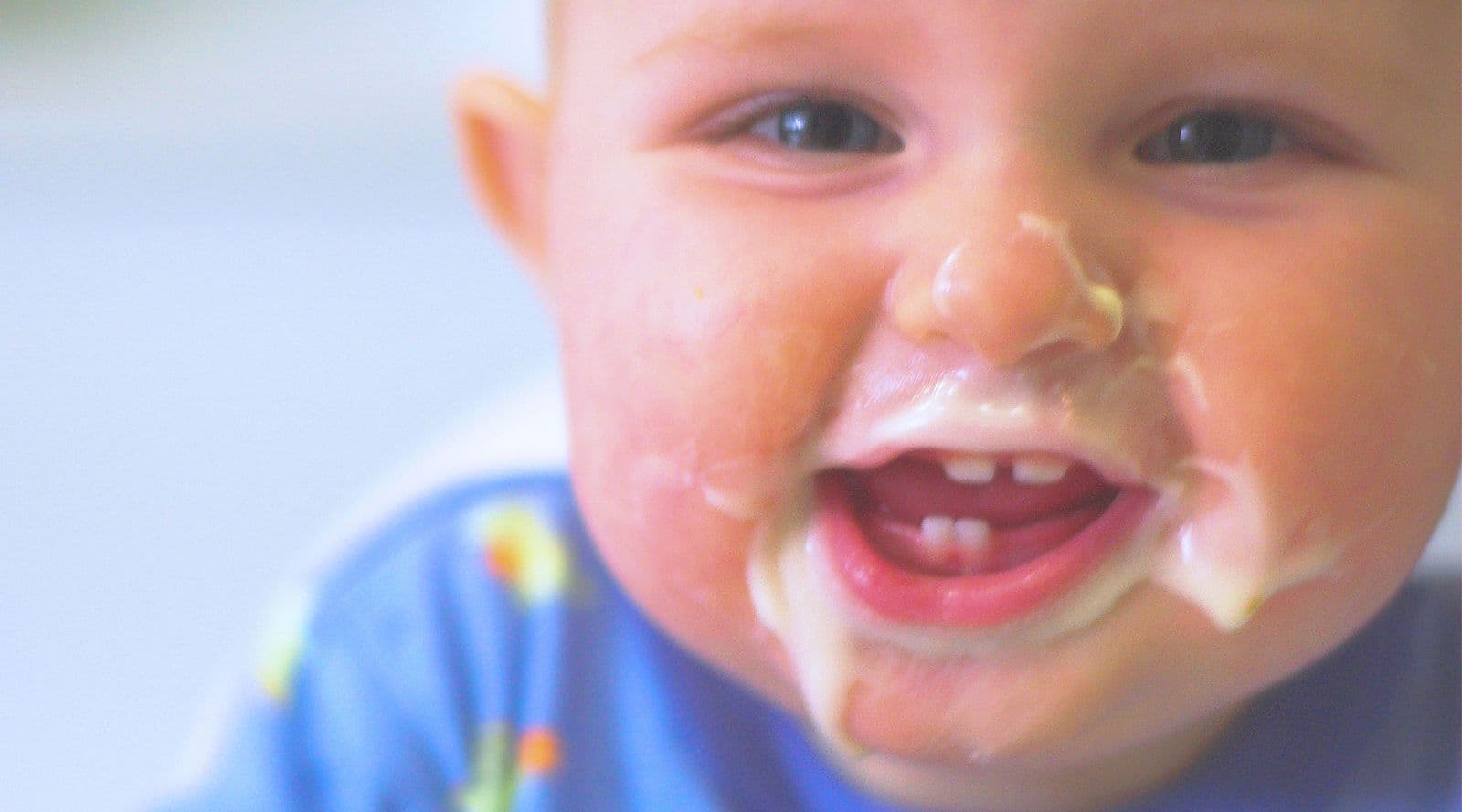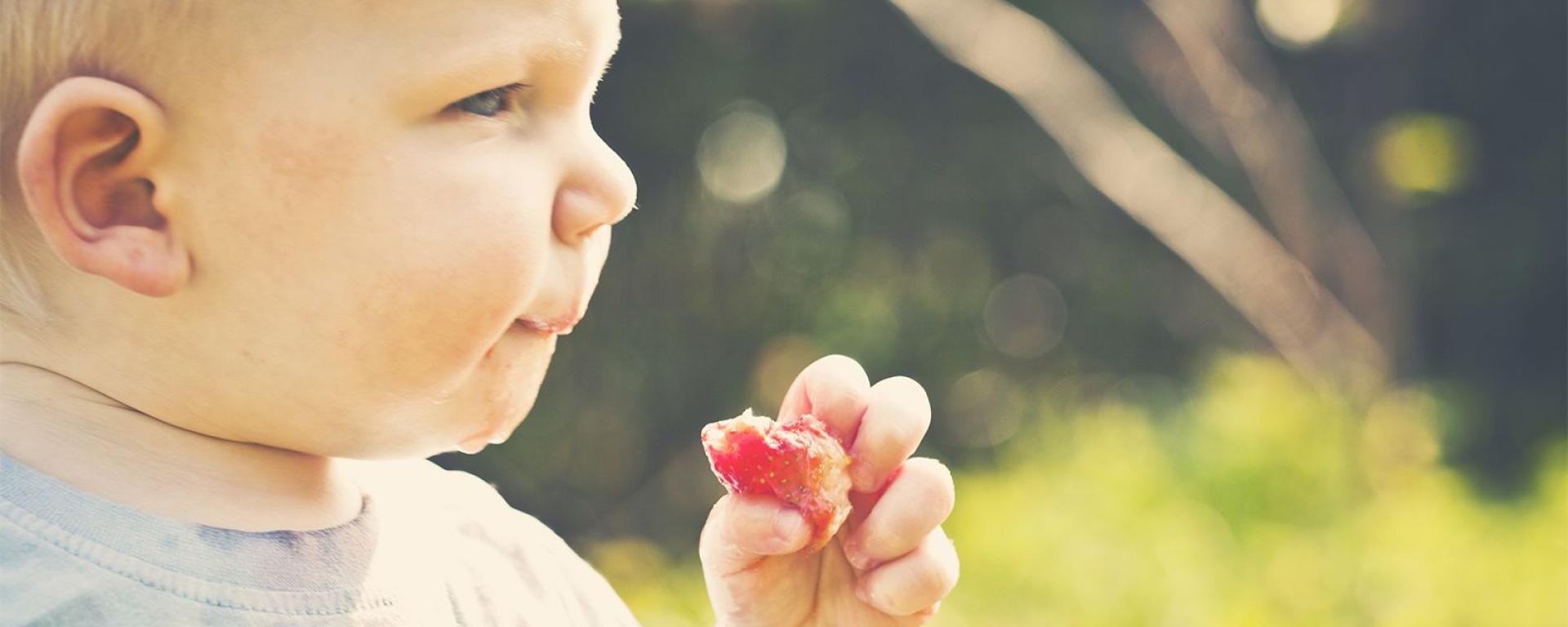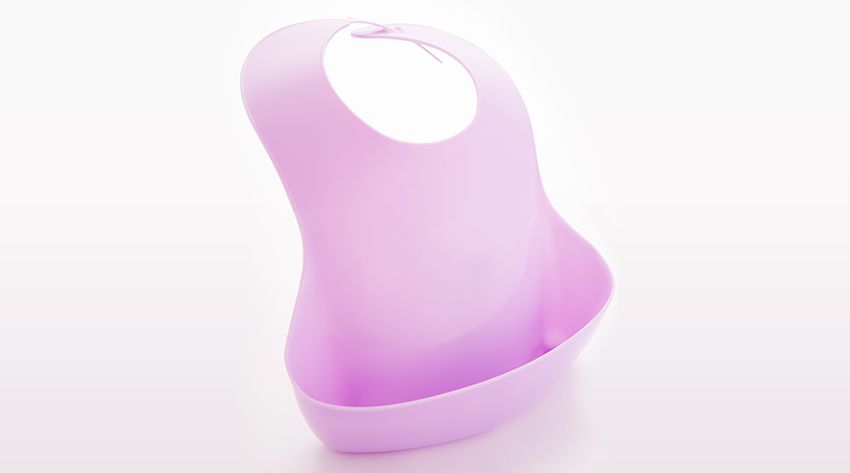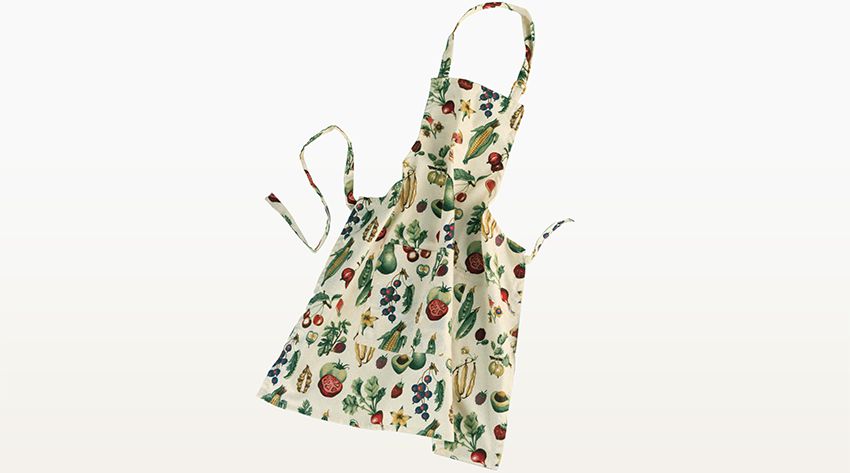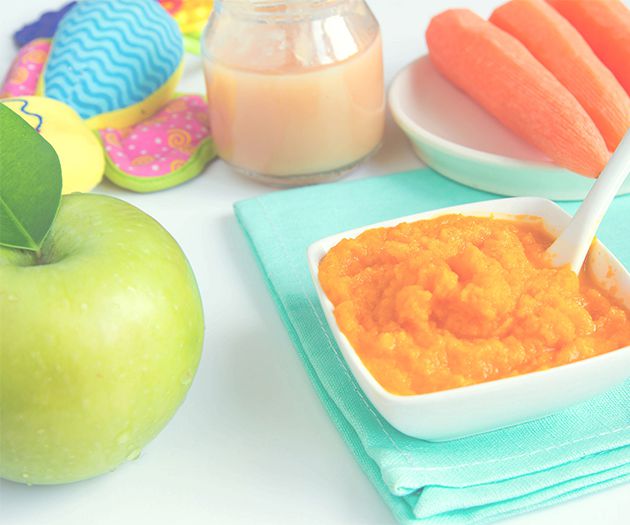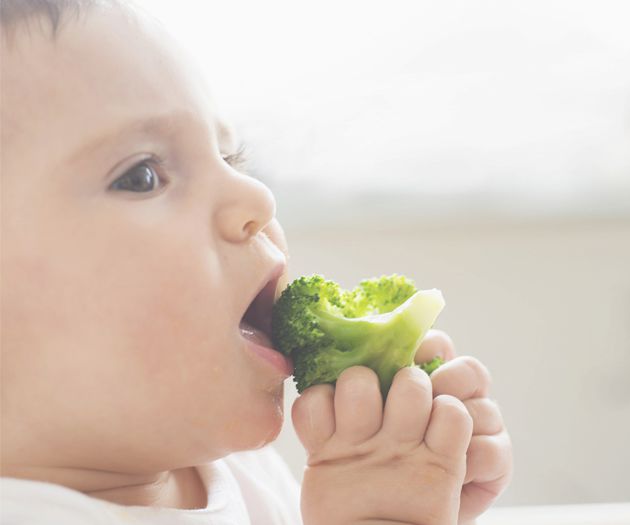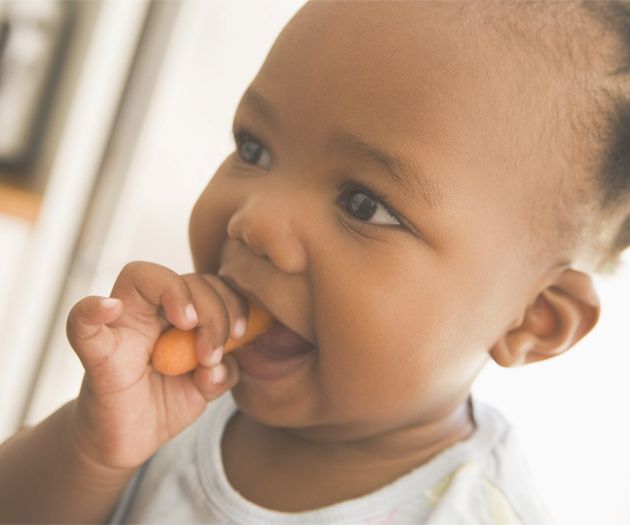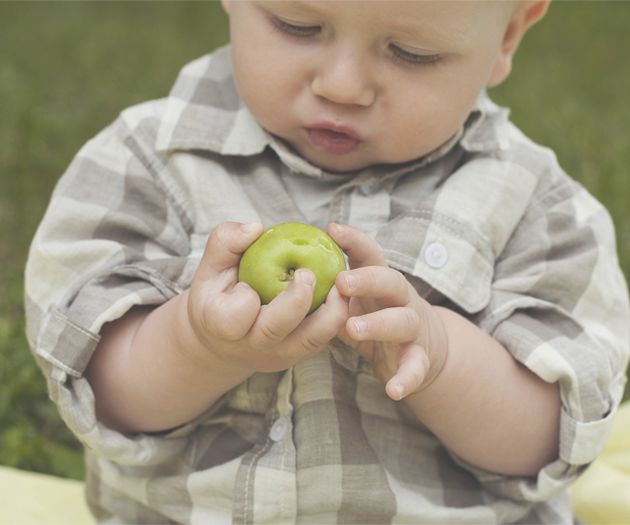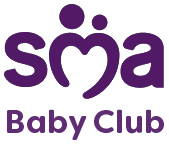At a glance
At six months your baby should show signs they’re ready to try solid foods
Start with single vegetables like soft cooked carrot or sweet potato
Baby-led weaning means letting baby feed themselves and explore new tastes
Baby’s immune system is still immature so always follow strict hygiene rules
What is weaning?
At around six months your baby will start getting hungrier because they need more than just breast milk or formula to meet their nutritional needs. Weaning is when you start to introduce solid foods. The HSE recommend waiting until baby is six months old for this stage. You can wean the traditional way by spoon-feeding baby or you can try baby-led weaning where you give them the chance to feed themselves. Many parents wean using a combination of both. Weaning baby will introduce them to an exciting world of new tastes and textures, but there are other reasons why it’s so important:
- It helps baby grow and develop.
- It’s the foundation for a healthy, balanced diet.
- It’s a perfect platform for baby to develop communication and independence by saying ‘yuk’ and ‘mmm’ to different foods.
- It can help with baby’s speech development through chewing and swallowing.
Benefits of baby-led weaning
- Your little one has the chance to choose, pick up and explore food themselves so they’re gaining independence.
- Baby will get used to different food textures early on.
- Baby can eat the same food with the rest of the family – much more convenient.
- Parents often say babies who choose their own foods have wider food tastes, although the evidence is mixed.
- Some research suggests babies who feed themselves are more likely to control their appetite, perhaps reducing their risk of obesity later in life. But again, this is inconclusive.
Benefits of spoon-fed weaning
- It’s not as messy and there isn’t as much waste.
- You have a little more control over what, and how much, baby eats. If most of your baby's food ends up on the floor, they’re not necessarily getting enough calories.
- If you have a family history of allergies, digestive problems, or food intolerances it might be better to spoon feed so you can monitor each ingredient.
- If your baby has additional needs and can't chew very well or has difficulty picking up food and getting it to their mouth, it’s easier if you hold the spoon.
- Babies born prematurely might need extra help from you.
The big question – when to wean baby?
There’s been plenty of debate on this topic. In the past, many parents would wean baby from as early as four months, but the HSE now recommends that it’s best to wait until around six months. This gives your baby’s digestive system time to develop so they cope with solid food better, it also means they’ll find it easier to chew and swallow foods. Every baby is different though, so if there’s a reason you’d like to start earlier check with your health visitor or public health nurse. Before the whole weaning journey begins, check your baby can do the following:
- Coordinate hands and mouth so they can pick up food on their own.
- Stay in a sitting position and hold their head steady to reduce the risk of choking.
- Swallow food (rather than spit it back out).
False signs of weaning
Some signs can be mistaken for a baby being ready for solid foods. The following are all normal behaviours that aren’t necessarily a sign of hunger or being ready to start weaning:
- Sucking and chewing on fists and toys (this could be early teething).
- Waking in the night when they have previously slept through (this is more a baby thing, than a weaning thing).
- Wanting extra milk feeds (this could just mean a growth spurt)
First baby weaning foods – where do I start?
Baby’s reactions to new tastes and textures is a sight to behold. Some babies crunch their faces in disgust as your beautifully blended sweet potato oozes down their face, while others are wide eyed with glee as they gobble down seconds and thirds. Either way the early days of weaning are more about experiencing new tastes and textures rather than nutrition. To start with, your baby only needs a small amount of solid food, once a day, at a time that suits you both.
You can start weaning with single vegetables and fruits – try blended, mashed, or soft-cooked sticks of parsnip, broccoli, potato, yam, sweet potato, carrot, apple or pear. You could also try baby rice mixed with your baby's usual milk. Make sure any cooked food has cooled right down before offering it to your baby.
It's important to introduce foods that could potentially trigger allergic reactions one at a time, in very small amounts, so you can spot any effects. You can learn more about feeding babies in our comprehensive guide. The following foods can be introduced from around six months as part of your baby's diet, in the same way as other foods:
- eggs (eggs without a red lion stamp should be cooked through)
- foods that contain gluten, including wheat, barley and rye
- nuts and peanuts - serve them crushed or ground, try one at a time and in small amounts so you can spot any potential allergic reaction
- seeds (serve them crushed or ground)
- soya
- shellfish (don’t serve raw or lightly cooked)
- fish (avoid shark, swordfish and marlin as they contain high levels of mercury)
Once baby is taking to these foods keep offering them regularly to make sure they don’t develop allergic reactions.
A few things you’ll find handy for weaning baby
Most of what you need you’ll probably already have at home, but there are a few things that'll come in handy:
- Small, smooth round-tipped plastic or bamboo spoons – these are gentle on your baby’s delicate mouth and gums.
- A colourful plastic bowl – the ones with the suckers are best.
- Soft plastic bibs that can be wiped clean – you’ll be getting through a fair few.
- A food blender/processor is handy for mixing baby food.
- Bendy ice-trays for storing baby portions.
- An apron to keep your own clothes clean.
- A feeding schedule stuck on the fridge to track what your baby has tried, and how often.
- A big washable sheet or shower curtain to throw on the floor in case your baby decides to throw their whole bowl overboard.
- A reusable silicone feeding placemat: roll it up and take with you when you’re feeding out and about.
For a handy checklist on everything you might need when weaning check out Mother of All Checklists.
A few do’s and don’ts of weaning
Here’s a few tips on how to wean safely:
- Remember to cool and test hot food before giving it to your baby, especially with microwaved food which can have extreme hot spots.
- Always watch your baby eating: you can encourage but also help if they’re struggling or choking.
- Encourage your baby to hold and touch their food.
- Allow your baby to feed themselves when they show an interest in food.
- Don't force your baby to eat or finish their food.
- If you're using a spoon, wait for baby to open their mouth before you offer the food. Let them hold the spoon if they want to.
Important hygiene tips for weaning baby
These tips may seem obvious, but baby’s tiny tummy is quite delicate and their immune system is still developing, so hygiene is more important than ever.
- Wash your hands before you prepare food.
- Sterilise feeding bowls and spoons until your baby is six months old. After that, wash in the dishwasher or very hot water.
- Dry your baby’s feeding equipment with clean tea towels or paper towels.
- Wash baby’s hands before feeding, even if you’re not offering finger foods, as it’s natural for them to play with spoons and food.
- Keep all surfaces clean using hot soapy water or a suitable antibacterial cleaner — don’t forget the floor once baby is on the move.
- Always throw away any uneaten food that your baby’s spoon has touched as saliva contains enzymes and bacteria.
How to store and reheat foods
Take care when storing foods for your baby as it’s worth being aware of botulism. It’s a very rare but life-threatening condition caused by toxins produced by Clostridium botulinum bacteria found in food that hasn’t been properly stored or cooked. Infant botulism can occur if a baby swallows a resistant form of this bacteria through contaminated soil or food. Honey can contain these spores, so you should avoid giving it to children less than a year old as they have yet to build up a defence against it.
In lots of cases of infant botulism, the specific cause isn't identified so it isn’t always possible to prevent it. Botulism must be treated in hospital, For more information on symptoms take a look at the Food Safety Authority of Ireland.
Here are some food safety tips to remember:
- Cool food as quickly as possible (ideally within 1-2 hours), cover with tight-fitting lids or seal into bags and put into the fridge or freezer.
- Store in the fridge for up to 48 hours. Use the coolest part of your fridge making sure it is less than 5°C. Avoid the door compartments.
- If freezing food, cool it quickly and freeze straight away, making sure to name and date the containers. Use within three months.
- Fill ice cube trays with puree and freeze. When they’re frozen, decant into freezer bags.
Always stick to the following guidelines when reheating foods:
- Thaw foods thoroughly before reheating. Leave in the fridge overnight or use the defrost setting on a microwave.
- Never refreeze meals or reheat food more than once.
- Make sure food is heated until piping hot, then cooled down before serving.
- You can use a microwave to reheat baby food but be careful. Stir to avoid hotspots and cool down and test before giving it to your baby.
- To cool food quickly, put it in an airtight container and hold it under a cold running tap. Stir it occasionally so that it cools all the way through.
Ready for step 1? Let’s begin with first weaning foods.
IMPORTANT NOTICE: We believe that breastfeeding is the ideal nutritional start for babies and we fully support the World Health Organization’s recommendation of exclusive breastfeeding for the first six months of life followed by the introduction of adequate nutritious complementary foods along with continued breastfeeding up to two years of age. We also recognise that breastfeeding is not always an option for parents. We recommend that you speak to your healthcare professional about how to feed your baby and seek advice on when to introduce complementary feeding. If you choose not to breastfeed, please remember that such a decision can be difficult to reverse and has social and financial implications. Introducing partial bottle-feeding will reduce the supply of breast milk. Infant formula should always be prepared, used and stored as instructed on the label in order to avoid risks to a baby’s health.



